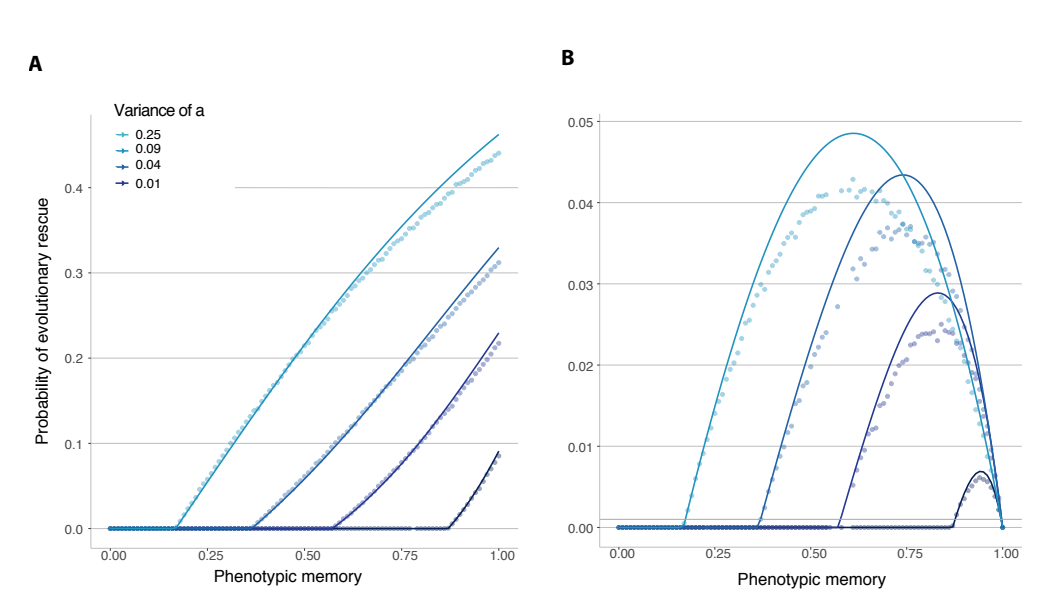The chance of evolutionary rescue crucially depends on the strength of phenotypic memory.

When the plastic allele is introduced with a beneficial phenotype, the probability of rescue monotonically increases with the phenotypic memory available to the plastic allele. This result makes intuitive sense: high-fitness variants of the plastic allele are preferentially transmitted to the next generation, and greater phenotypic memory increases their propensity to maintain the high-fitness phenotype and become established in the population.
When the plastic allele is introduced with a deleterious phenotype, whose birth rate is smaller than its death rate, there is still the possibility of evolutionary rescue, because the phenotype of type-a individuals may change between generations. In this case, the probability of evolutionary rescue depends non-monotonically on the strength of phenotypic memory. There is simple intuition for this result as well, and it is informed by our mathematical analysis. Intuitively, the probability of rescue is contingent on a plastic individual producing an offspring with the beneficial phenotype, before the a-lineage is lost.
Play with the phenotypic memory parameter below. Observe how, for large phenotypic memory (let's say 0.9) the population is more likely to persist and not go extinct compared to when phenotypic memory is small (let's say 0.1).
Click anywhere on the population to start or stop the simulation. Use the form to change the carrying capacity or the birth rate of A. It's important to stop the simulation (by clicking on it) before changing parameters (I still have to fix a bug :( ).